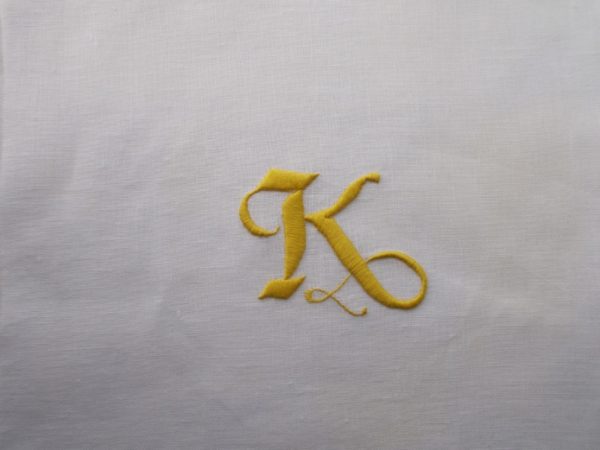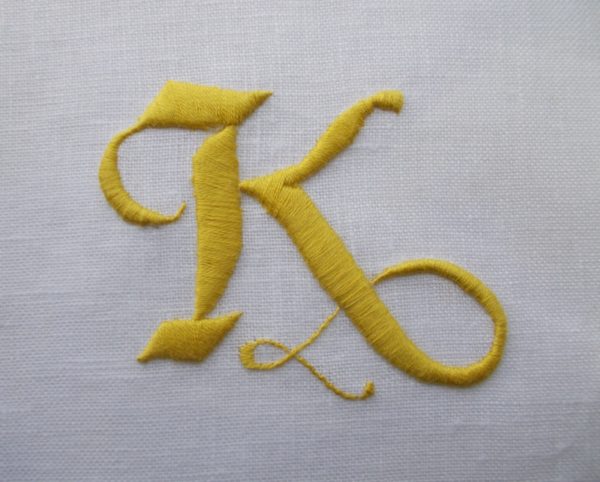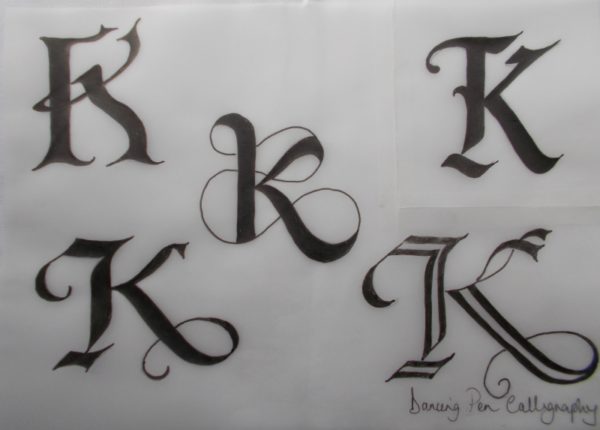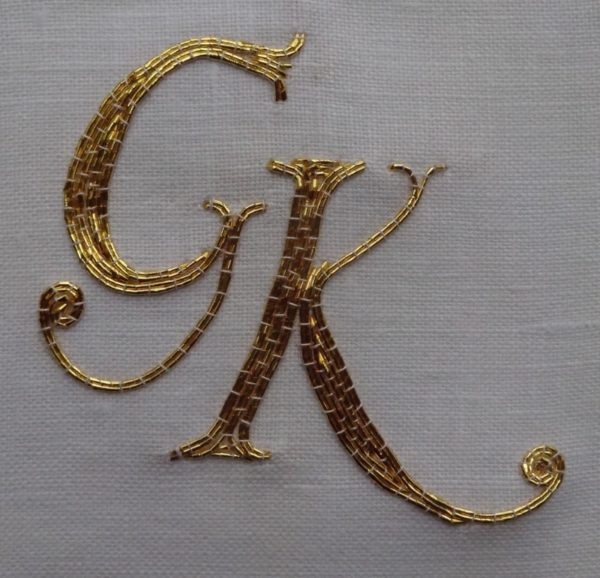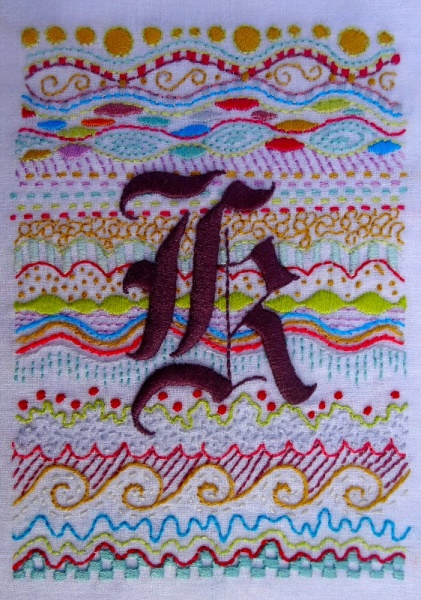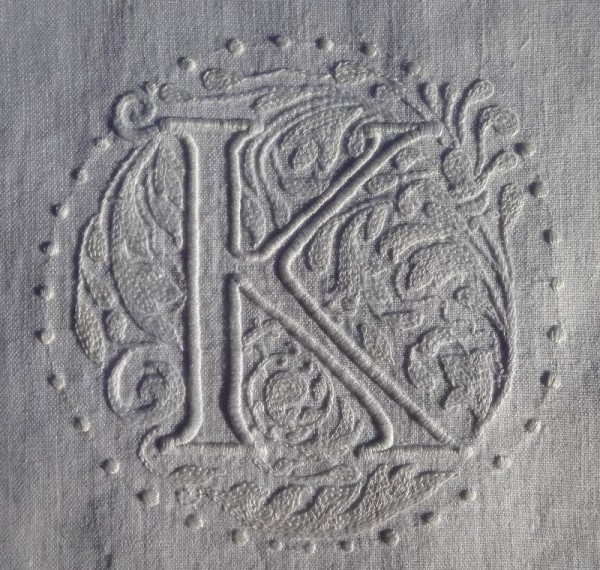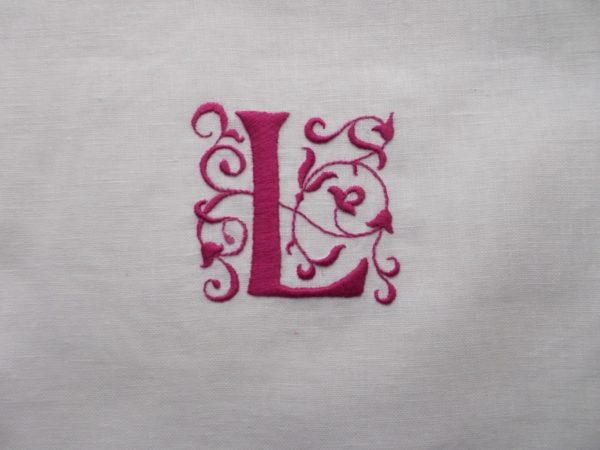
Embroidered letter L (hand embroidered by Mary Addison)
Last week saw The Times Cheltenham Literary Festival in full swing and each day I discovered from my copy of the Times fascinating talks I would have loved to have gone to had I been more organised – there’s really no excuse when the venue is all of 10 minutes away on foot! However, as it was, our week has been very full and we have been off into town every day to join in with something – or in my husband’s case – to deliver something (deliver in the sense of giving a talk or overseeing a discussion, rather than trudging around with parcels and knocking on doors!).
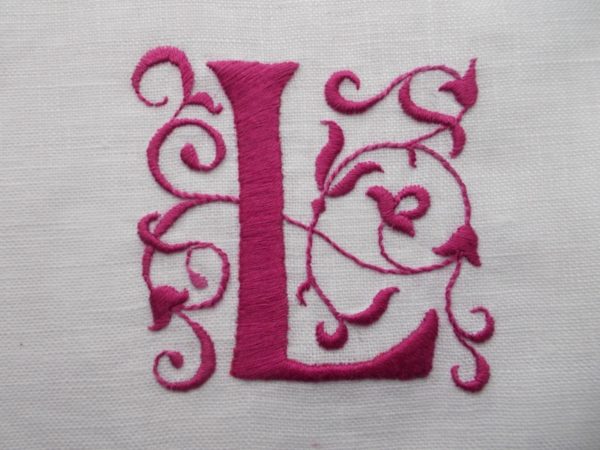
Embroidered letter L (hand embroidered by Mary Addison)
Tuesday found me knitting, chatting and having tea (porcelain tea pot and matching cups) and scones (homemade) beside the warm glow of real coals in the kitchen at The Holst Birthplace Museum. For 4 Tuesdays this month, (until and including the 23rd of October, 2 – 4 pm) the museum is holding ‘Knit Your Bit’, World War I themed knitting sessions with an experienced volunteer knitter on hand, knitted garments to examine and period knitting patterns to rifle through. Some patterns were ludicrous – ‘what’s a balaclava?’ asked a perplexed 19 year old male museum volunteer of an especially strange creation – while other patterns were so lovely that the curator disappeared off and made photocopies for those that wanted one. While we all sat knitting our 21st century patterns, Neela Mann (author of ‘Cheltenham in the Great War’, published by The History Press) entertained us with what she had discovered about knitting, textiles and women’s roles during that time. Such a wealth of knitting knowledge in one place – this Tuesday I think I shall tap into it and see if someone will teach me cabling.
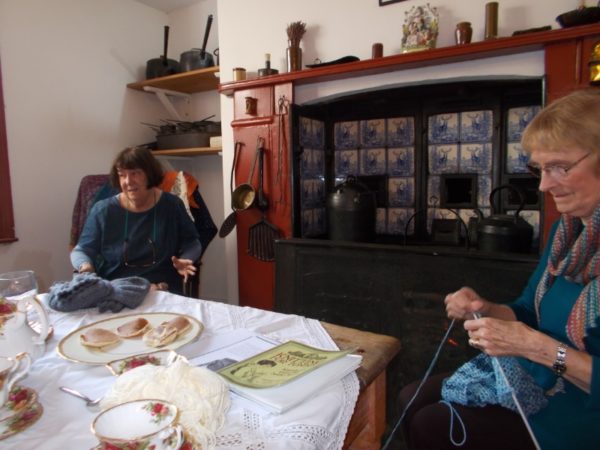
Neela Mann (author of ‘Cheltenham in the Great War’ and fellow knitter at work in the kitchen of Cheltenham’s Holst Birthplace Museum
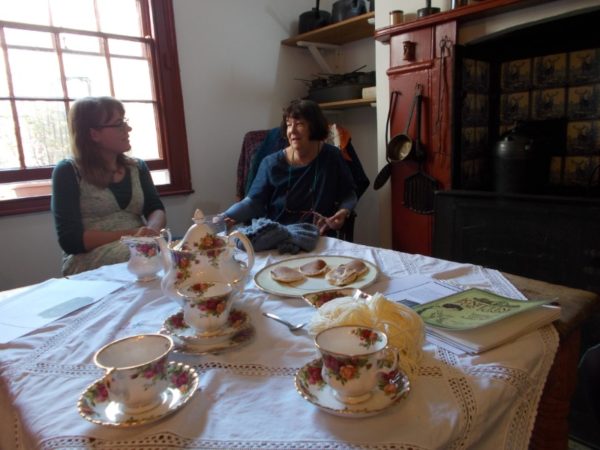
Laura Kinnear, Curator of Holst Birthplace Museum chats to Neela Mann about knitting
Like the little figures of a man and a woman who pop in and out of a weathervane house (one is always in when the other is out), while I was at The Holst Museum on Tuesday, David was at home and I was elsewhere when David was at The Holst on Wednesday and Saturday to talk about the some of the paintings in the house and to discuss how they reflected the taste of the Regency period. (Interestingly with respect to matters of taste, in recent weeks a complaint was made to the curator that a Theodore von Holst painting in the room, ‘Bertalda frightened by apparitions’, was disgusting for showing the heroine with bare breasts. In fact, the painting would probably not have been hung in such a middle class sitting room but in a much grander house (like Thirlestaine House in Cheltenham) and is there largely because of Theodore von Holst’s connection wit the composer, to whom he was great uncle. So, I suppose you could say that to a degree, the complaint was justified – even if a bit surprising today.) Saturday, when David had his second session discussing paintings at The Holst, I was at The Wilson (Cheltenham Art Gallery and Museum) to view some of the museum’s patchwork quilts and coverlets. Textiles are so fragile and prone to deterioration so it was really fascinating to look at handwork from the mid C19th at such close quarters. One of the quilts employed a method of piecing none of us had seen before and was sewn with such tiny stitches that we all wanted to see the size of the needle she’d used – smaller than any I have, I’m certain! But more of this next week, when I’ll blog this event with pictures.
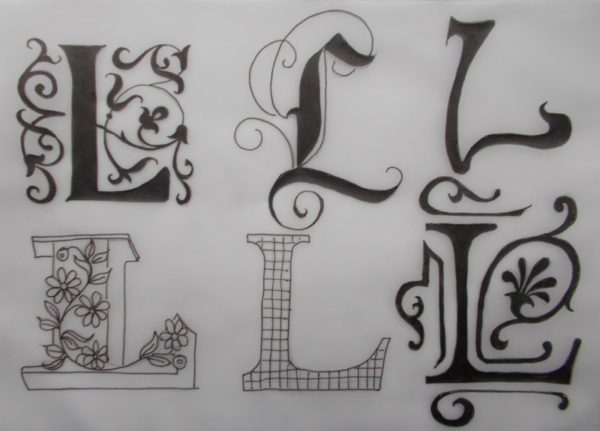
Sketches of various Ls found online
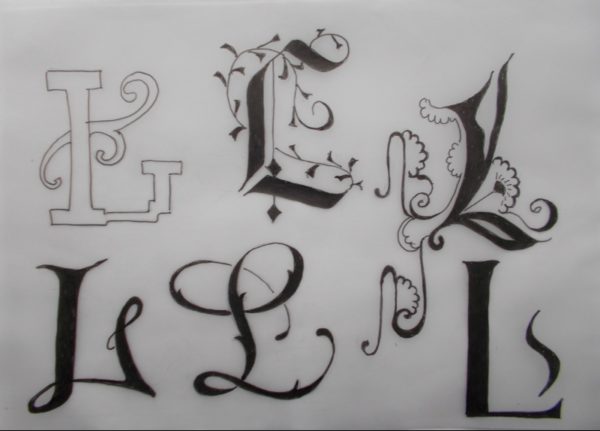
Sketches of more Ks found online
Thursday and Friday and both David and I were at The Wilson again where my husband is starting up Art Appreciation groups for Cheltenham U3 A (University of the Third Age). These will be informal discussions about art (mainly painting, prints and some sculpture) through the medium of slides, trips upstairs to Cheltenham’s collections in the galleries and some viewing of pieces brought to us out of store. My husband is very keen that people should feel that collections held in their name should be accessible. This is becoming increasingly difficult at a time of heavy cuts to public services. The museum has now only one full time member of staff, while other posts have been reduced to part time or job share; recently the part time conservator left and that post remains unfilled (I believe that not all salaries are sourced by the local authority via The Cheltenham Trust). For comparison, during the time my husband was director, the museum and art gallery (including the fledgeling Holst Museum) had 10 full time members of staff, plus 3 part time as well as 6 security staff, not all of whom were part time; all were paid by the local authority. Times are indeed hard and even with a good team of volunteers, life is tough for museums.
This week’s letter is based on Renaissance designs carved in wood and used for printing. I used Anchor stranded cotton No 89. The L itself was padded out in chain stitch over which satin stitch was sewn using three strands. The finer lines of the foliate stems was done in whipped backstitch with 2 strands of thread.
More pictures of the curator, Laura Kinnear in the Holst Birthplace Museum.

